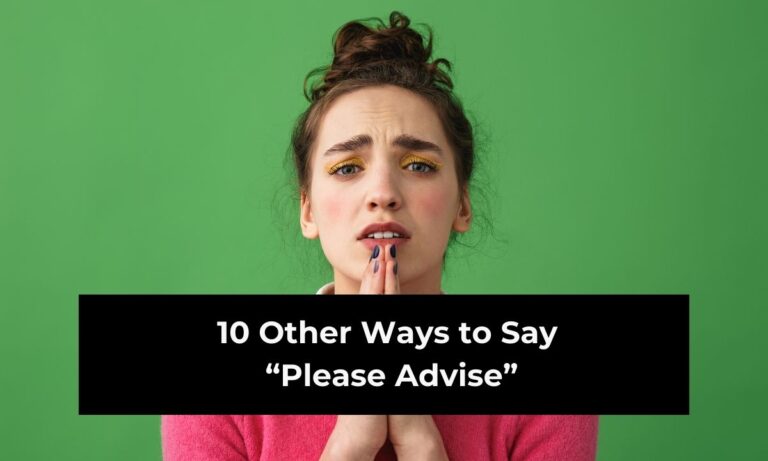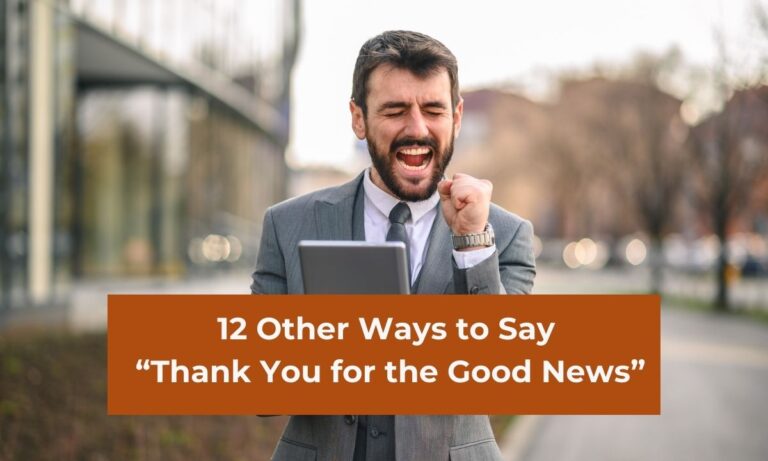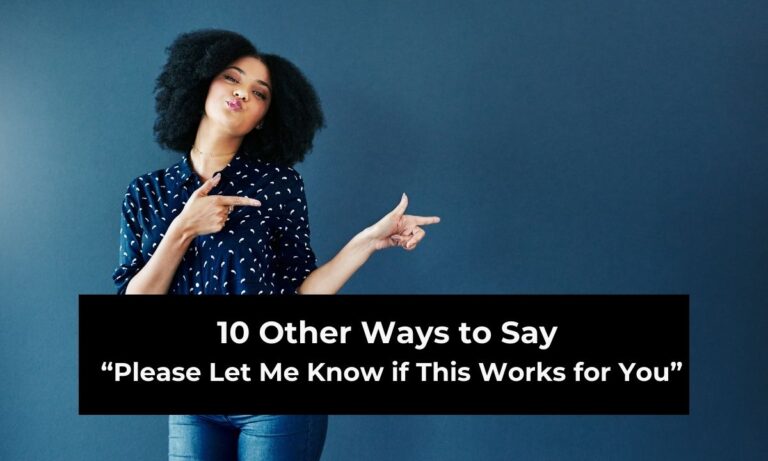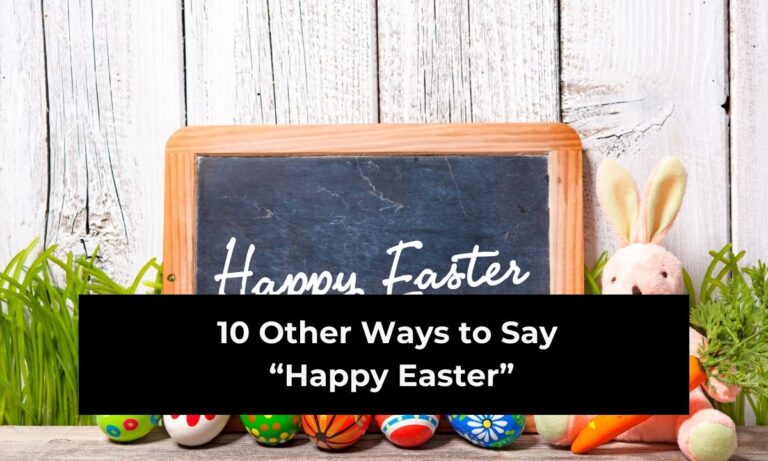When you’re arranging to meet someone—whether for a job interview, a networking event, a client presentation, or even a first coffee date—there’s a good chance you’ve typed the phrase “Looking forward to meeting you” in an email or message.
It’s a classic line, but let’s be honest—it’s also a little overused. After all, you want your message to stand out and feel warm, genuine, and personal. The way you express excitement about meeting someone can set the tone for the interaction before it even begins.
Using the same phrase over and over can make your emails blend in with everyone else’s. That’s why having a variety of alternative phrases can help you convey the same sentiment while adding a little more personality, professionalism, or charm—depending on your situation.
You might want something slightly more formal when you’re writing to a potential employer. On the other hand, a friendly coffee meet-up might call for something casual and lighthearted. The words you choose can help communicate your enthusiasm and hint at your communication style before you’ve even shaken hands.

In this article, you’ll find 10 fresh and creative alternatives to “Looking forward to meeting you.” Each one comes with tips on when to use it, examples of how to phrase it naturally, and the subtle emotional tone it creates.
By the time you finish reading, you’ll have a collection of go-to phrases that will make your emails, messages, and invites sound thoughtful, professional, and engaging. Plus, you’ll never have to default to the same old line again. Let’s explore these alternatives and help you say it in a way that’s uniquely yours.
1. Excited to Finally Meet You in Person
If you’ve been communicating with someone virtually, this phrase carries a sense of anticipation and warmth. It works well in both professional and personal settings because it feels genuine without being overly casual.
When to Use It
Use this when you’ve had multiple email exchanges, video calls, or messages with someone but haven’t yet met face-to-face. It emphasizes the transition from digital to in-person interaction.
Example in Context
- “I’ve really enjoyed our email conversations, and I’m excited to finally meet you in person next week.”
- “After all our Zoom calls, I’m excited to finally meet you in person and dive into our plans.”
Why It Works
The word “finally” adds a sense of buildup and importance to the meeting. It suggests that the meeting is a natural next step in a positive, ongoing relationship. This makes the recipient feel valued and gives them a hint that the meeting will be meaningful.
2. Can’t Wait to Connect
Short, simple, and friendly—this phrase works beautifully in casual networking and social situations. It also works in professional emails where you want to strike a more approachable tone.
When to Use It
Ideal for informal business events, coffee chats, creative collaborations, or social meetups. It’s great when you want to convey excitement without sounding too formal.
Example in Context
- “Thanks for agreeing to meet! Can’t wait to connect and share ideas.”
- “I’ve heard so much about your work—can’t wait to connect!”
Why It Works
It’s concise, upbeat, and modern. “Connect” has a collaborative feel, suggesting you’re open to mutual exchange rather than just formality. It also avoids sounding like a template phrase, making your message stand out.
3. Looking Forward to Our Conversation
If the upcoming meeting is centered on discussion—whether it’s an interview, a brainstorming session, or a friendly catch-up—this is a polite, clear alternative.
When to Use It
Perfect for situations where the focus is on the dialogue itself rather than the physical meeting. This works especially well if you’re meeting virtually.
Example in Context
- “I’m looking forward to our conversation about your project goals.”
- “Thanks for scheduling time to talk. I’m really looking forward to our conversation.”
Why It Works
It shifts the emphasis from the act of meeting to the value of the discussion, which can feel more intentional. This can help the other person anticipate a meaningful exchange.
4. Eager to Hear Your Thoughts
This alternative works well when the purpose of the meeting is to gather input, feedback, or ideas. It feels collaborative and shows respect for the other person’s perspective.
When to Use It
Use this in project kick-offs, consultations, or strategy sessions where you want to emphasize the value of the other person’s input.
Example in Context
- “I’m eager to hear your thoughts on the proposal and see how we can refine it together.”
- “Thanks for making the time—I’m eager to hear your thoughts on the next steps.”
Why It Works
This phrase subtly shifts the focus to the other person, making them feel important and respected. It also signals that you’re open to new perspectives and ready to collaborate.
5. Anticipating a Great Discussion
This option works particularly well in professional or academic contexts. It’s optimistic and forward-looking while keeping a polished tone.
When to Use It
Best for formal meetings, panel discussions, or networking events where you expect meaningful dialogue.
Example in Context
- “I’m anticipating a great discussion about our industry trends next week.”
- “Looking forward to seeing you and anticipating a great discussion.”
Why It Works
It’s a polished phrase that maintains professionalism while still showing enthusiasm. The word “great” adds positive expectation without sounding forced.
6. Counting Down the Days
This is a playful, high-energy phrase that works perfectly in personal contexts or creative industries where a more casual tone is welcome.
When to Use It
Use this with friends, collaborators, or clients you already have a friendly rapport with. It works for events, launches, or special occasions.
Example in Context
- “Counting down the days until our lunch meeting!”
- “I’m counting down the days until our big presentation together.”
Why It Works
It adds excitement and a touch of drama—in a good way. It tells the recipient that the meeting is a highlight for you, which can make them feel valued.
7. Ready to Dive In
This phrase gives a sense of preparedness and energy. It’s great when you want to show that you’re not just looking forward to the meeting—you’re ready to get started.
When to Use It
Perfect for workshops, planning sessions, or team kick-offs where productivity is a key goal.
Example in Context
- “I’m ready to dive in and work through the project details together.”
- “Thanks for scheduling this time—I’m ready to dive in and get started.”
Why It Works
It communicates motivation and readiness, which can help set a productive tone for the meeting.
8. Thrilled to Be Working Together
This one blends excitement with professionalism. It’s a warm way to express that the meeting is part of a larger collaboration.
When to Use It
Use it when the meeting marks the start of a partnership, contract, or project.
Example in Context
- “I’m thrilled to be working together and can’t wait to start our first session.”
- “Thrilled to be working together on this campaign and excited for our meeting.”
Why It Works
It frames the meeting as a milestone in a shared journey, which makes it feel important and inspiring.
9. Looking Forward to Learning More About You
This phrase works especially well for interviews, networking events, or first-time introductions. It’s personal and shows genuine curiosity.
When to Use It
Best for situations where your main goal is to understand the other person’s background, skills, or story.
Example in Context
- “I’m looking forward to learning more about you and your experiences.”
- “Thanks for agreeing to meet—I’m looking forward to learning more about you.”
Why It Works
It puts the spotlight on the other person, which can make them feel respected and appreciated.
10. See You Soon
Sometimes, the simplest phrases are the most effective. “See you soon” is warm, casual, and works in almost any context.
When to Use It
Use it when the meeting is already scheduled, and you don’t need to overcomplicate the message. Works equally well for friends, colleagues, or clients.
Example in Context
- “Everything’s set for Thursday—see you soon!”
- “Looking forward to Thursday. See you soon.”
Why It Works
It’s short, friendly, and to the point. It’s perfect for ending an email or message on an upbeat note.
Conclusion
The way you express excitement about meeting someone can do more than fill space at the end of an email—it can shape the tone of the entire interaction. By swapping out “Looking forward to meeting you” with these alternatives, you can make your messages feel more personal, polished, or playful, depending on your goal.
Each phrase offers a slightly different emotional tone. Some lean professional and formal, while others bring in casual warmth or creative flair. The key is to match the phrase to the relationship you have with the recipient and the context of your meeting.
The more intentional you are with your words, the more likely you are to leave a positive impression before the meeting even happens. So next time you’re drafting an email or text, reach for one of these alternatives—and watch how it transforms your communication style.
FAQs
1. Is it unprofessional to say “Can’t wait to meet you”?
Not necessarily. It depends on the context and your relationship with the recipient. In formal situations, choose a slightly more polished alternative.
2. Which phrase works best for a job interview?
“Looking forward to our conversation” or “Eager to hear your thoughts” are professional and respectful choices.
3. Can I use these alternatives in text messages?
Absolutely. Just pick the one that matches the tone of your relationship and the situation.
4. How do I make my meeting confirmation email sound more personal?
Use a phrase that reflects genuine excitement and mentions something specific about the meeting.
5. Should I avoid “Looking forward to meeting you” entirely?
Not at all—it’s still a good phrase. But rotating in alternatives keeps your communication fresh and engaging.





